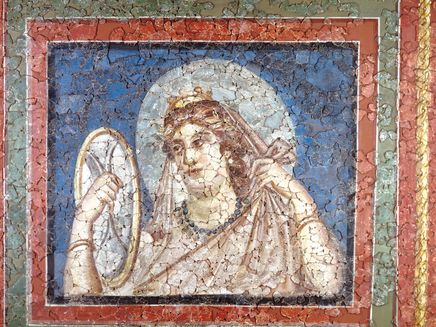Constantine ceiling painting
A unique work of Late Antique art awaits you at the Cathedral Museum in Trier. Found under Trier Cathedral, the ceiling murals were recovered from a depth of over three metres and then, over a ten year period, reassembled like a puzzle from more than 30,000 fragments. They originate from a lavishly designed residential palace that was demolished around 335 AD when the early Christian church complex was significantly expanded.
During excavation work in the centre of the cathedral in 1945/46, fragments of an ancient rectangular plaster ceiling from a sizeable residence were discovered approx. 3.5 metres below the present church floor by archaeologist Dr. Theodor K. Kempf.
Earlier archaeological work by cathedral chaplain Johann Nikolaus von Wilmowsky in 1843 and museum director Johann Wiegand in 1906 had previously revealed fragments of painted plaster. However, it was Theodor K. Kempf who first recognised the scale of this discovery. He salvaged the ceiling, which was in many thousands of fragments, and began the process of assembling it together with the restorer P. Welter. The first 6 paintings were presented to the public in 1951.
During this initial excavation period, Kempf only explored the northern half of the Late Antique room, consequently the actual dimensions of the space, and the number of ceiling murals were as yet unknown. It was only in 1967/68 that the southern half was uncovered and the remains of the paintings hidden here were made accessible.
The ceiling murals have been on display in a dedicated room in theCathedral Museum Trier since 1988. For conservation reasons, the paintings are mounted on walls and not the ceiling. In 1993, the assembly and conservation of the so-called “diagonal panels”was completed, which are also on display in the museum together with a reconstruction of the ceiling substructure.


